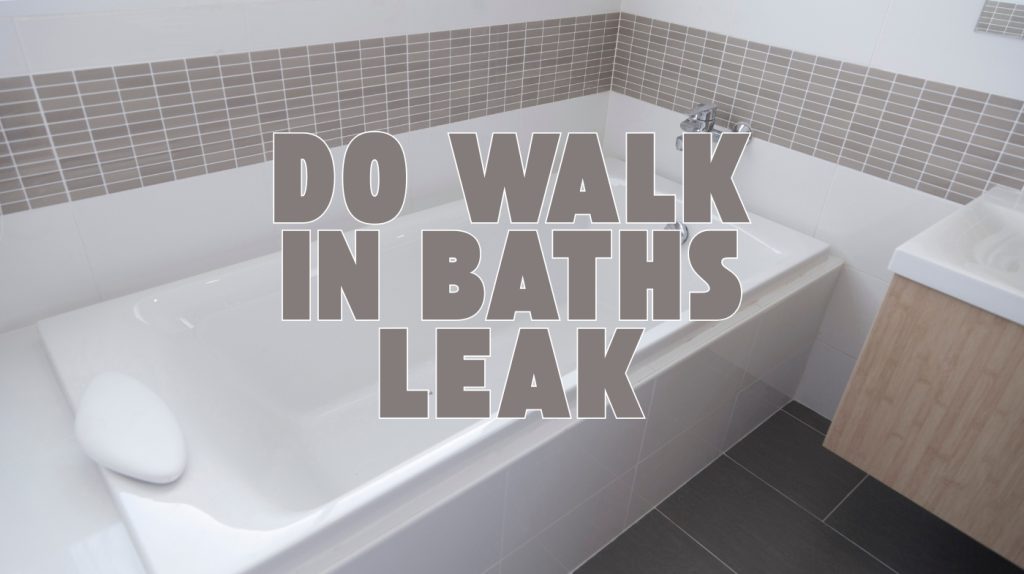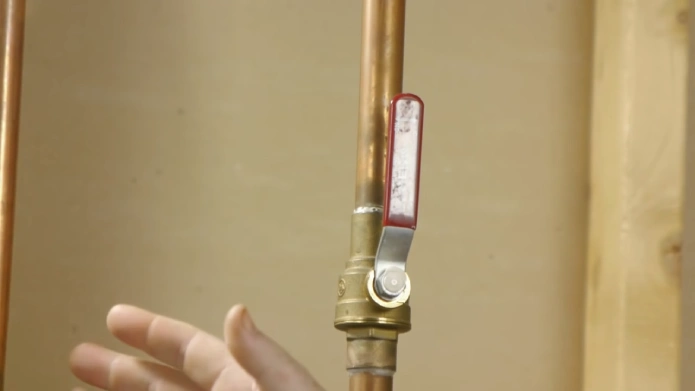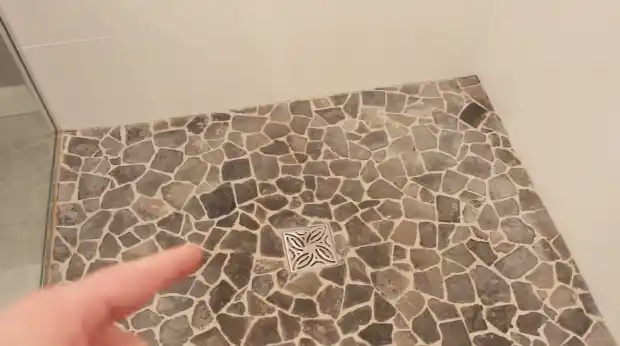Last Updated on July 21, 2025
You won’t experience leaks from walk-in baths if their doors have properly engineered, high-quality seals installed and maintained per manufacturer guidelines. Precision-fit rubber or silicone gaskets, double seals, and fixed hinges create a reliable watertight barrier.
However, leaks can arise from worn seals, poor installation, or drainage issues. Regular inspection and professional setup ensure long-term performance and leak prevention. Understanding these factors helps you safeguard your bath’s integrity and avoid water damage risks.
Key Takeaways
- Walk-in baths are designed with watertight seals and specialized door edges to prevent leaks when properly installed and maintained.
- Leakage can occur if seals wear out, become damaged, or if installation is improper or misaligned.
- Regular inspection and timely replacement of gaskets and seals are essential to maintain leak resistance.
- Effective drainage and water management reduce pressure on seals, minimizing leak risks.
- Professional installation and user adherence to manufacturer guidelines significantly lower the chances of leaks.
How Walk-in Bath Doors Are Designed to Prevent Leaks?
Although walk-in bath doors might seem vulnerable to leaks, their design incorporates specialized sealing edges that create a watertight barrier when closed. You’ll find these seals precision-fitted to eliminate any gaps, ensuring no water escapes even under significant water pressure.
The sealing materials resist degradation from prolonged water exposure and cleaning agents, maintaining their integrity over time. Regular inspections for signs of corrosion in the sealing edges help maintain their effectiveness.
When you operate the tub, you must close and lock the door securely before filling to preserve the seal’s effectiveness. Additionally, secondary safety features like door drain assemblies provide backup protection by containing leaks if the primary seal fails.
Walk-in tubs are also built with quality materials designed specifically for water retention, which further ensures leak prevention. Expert installation further guarantees tight joints and proper perimeter sealing, preventing water seepage.
Common Causes of Leakage in Walk-in Tubs
Walk-in bath doors use advanced sealing technologies to prevent leaks, but leakage can still occur due to several factors beyond door design. You might encounter issues like seal and gasket degradation, plumbing or drainage faults, and material fatigue, all of which undermine watertight integrity.
However, note that every Safe Step walk-in tub door is airtight with a no-strength locking handle, significantly reducing the chance of leaks originating from the door itself. For example, seals can dry out or accumulate mineral deposits, reducing their effectiveness.
Plumbing blockages or incorrect installation may cause water to seep through joints. Over time, stress and temperature changes can create micro-cracks in the tub material or door frame, compromising the seal.
Using proper maintenance techniques and checking for wear can help preserve the seals’ function. Common causes include:
- Seal wear and buildup impairing tight closure
- Faulty plumbing connections or blocked drains
- Structural fatigue causing cracks or warping
Essential Design Features That Ensure Watertight Seals
Because preventing leaks is crucial for safe and comfortable use, manufacturers incorporate several essential design features to guarantee watertight seals in these baths. Ensuring watertight seals is vital for safety and comfort in bath design.
The watertight door mechanism uses high-quality rubber or silicone gaskets tested under pressure to ensure no water escapes, with locking systems designed for easy yet secure closure. Positioned at the side of the tub, the door allows easy entry and exit, enhancing the overall safety of the bath.
Regular maintenance and inspection of these gaskets help maintain their sealing effectiveness over time. Multi-layer flexible seals resist corrosion and mildew, conforming to slight misalignments while remaining replaceable to extend lifespan.
Precision-engineered door frames made from reinforced materials maintain even pressure and alignment, preventing gaps or sagging. Low-entry thresholds integrate smoothly with seals, promoting water runoff and reducing structural stress.
Complementing these, optimized drainage and overflow systems minimize water pressure against seals, ensuring the enclosure remains fully watertight during use and exit. These design elements collectively secure reliable, leak-free operation.
Best Practices for Preventing Walk-in Bath Leaks
To prevent leaks effectively, you need to combine professional installation, routine maintenance, and correct operation of your bath.
Start by hiring licensed installers who strictly follow manufacturer instructions, ensuring all plumbing connections are secure and waterproofing is exhaustive. Regularly inspect and clean door gaskets, seals, and locking mechanisms, replacing any worn components promptly.
Ensuring that door seals are engineered with rubber gaskets or seals designed for water-tightness is crucial to maintaining a leak-free experience. Additionally, choosing materials resistant to wear and corrosion, similar to those used in cast iron construction, can enhance durability.
Operate the bath correctly by always closing and locking the door fully before filling and never opening it until the tub is drained. Key practices include:
- Use manufacturer-recommended sealants and adhesives during installation.
- Perform routine seal inspections and lubrications to maintain flexibility.
- Follow strict fill and drain procedures to avoid water escaping.
Debunking Myths About Walk-in Bath Leakage
Although concerns about leaks might make you hesitant, many common beliefs about walk-in bath leakage are based on misconceptions rather than facts. Modern walk-in baths feature airtight, heavy-duty rubber door seals designed with pressure-activated closures to ensure a watertight fit.
Leakage is rarely due to tub design; instead, it typically stems from improper installation or user error, such as failing to fully latch the door. Proper installation is crucial because improper leveling increases the risk of leaks.
Additionally, regular use can affect seal performance, so understanding maintenance cycles is important. Seals undergo rigorous testing and often carry, reflecting manufacturers’ confidence in their durability.
Regular maintenance, like rinsing seals after use, preserves their integrity. Visible puddles or flooring damage generally indicate leaks, which are usually detected early and resolved.
Water Management Challenges and Their Impact on Leakage Risks
Understanding the design features that prevent walk-in bath leaks is only part of managing water effectively. You must address water management challenges that impact leakage risks, such as maintaining door seal integrity, ensuring efficient drainage, and accounting for environmental factors.
Poorly aligned doors or compromised seals increase leakage potential. Inadequate drainage can lead to water pooling and pressure build-up, which is similar to how clogged drains cause overflow in heat pump systems.
Additionally, installation quality and bathroom conditions affect containment reliability. Many walk-in bathtubs incorporate double seals and fixed hinges to enhance water leakage prevention.
Key water management considerations include:
- Regularly inspecting and maintaining door seals and gaskets to preserve watertight closure
- Verifying rapid drainage functionality to minimize standing water and relieve seal pressure
- Ensuring professional installation and proper leveling to prevent water escape due to misalignment or humidity
Frequently Asked Questions
How Long Do Walk-In Bath Door Seals Typically Last Before Replacement?
You can expect walk-in bath door seals to last about 5 to 7 years before needing replacement. Their longevity depends on factors like seal material quality, usage frequency, and bathroom humidity.
To extend their life, you should regularly inspect and clean seals with manufacturer-approved, non-abrasive cleaners. Maintain proper ventilation, and avoid slamming doors. Promptly addressing any signs of wear or leaks will help you maintain a watertight seal and prolong its effectiveness.
Can Walk-In Baths Be Installed on Uneven Bathroom Floors?
You can install walk-in baths on uneven bathroom floors, but you’ll need to level the surface first. Use leveling compounds, shims, or modify the subfloor to create a stable, flat base. Secure adjustable feet and frame supports to maintain balance and prevent rocking.
Proper floor preparation guarantees correct plumbing alignment and waterproof sealing, reducing risks of leaks and damage. Always confirm the bath sits level before finalizing installation.
Are Walk-In Bath Doors Safe for Children to Use Alone?
You can trust walk-in bath doors to be safe for children when designed with features like automatic locks, non-slip surfaces, and easy-to-operate mechanisms. However, children shouldn’t use them alone without supervision due to potential drowning risks and possible difficulties managing door locks.
To guarantee safety, educate kids on proper use, install safety overrides, and maintain secure door seals to prevent leaks or entrapment. Supervision remains essential for safe independent use.
What Materials Are Used for Walk-In Bath Door Seals?
You’ll find walk-in bath door seals commonly made from silicone and EPDM rubber, valued for their water resistance, flexibility, and durability. PVC and vinyl are affordable alternatives, offering decent flexibility but less longevity.
High-end models may use clear polycarbonate for aesthetics, while some seals include magnetic or compression strips for tighter closure.
Choosing the right material depends on your tub’s design and maintenance preferences, ensuring effective leak prevention and long-term performance.
Do Walk-In Baths Require Special Cleaning Products for Seals?
You wouldn’t want to destroy your walk-in bath seals with a single cleaning mistake, they’re delicate yet essential! Yes, you need special cleaning products for seals. Avoid harsh chemicals and abrasives that deform or damage them.
Instead, use mild detergents, rubbing alcohol weekly, or manufacturer-approved cleaners. Gently towel-dry seals after cleaning and allow them to air dry fully. This preserves their watertight integrity and prevents leaks effectively.
Understanding Walk-In Bath Leaks: Prevention Starts with Awareness
You might worry that walk-in baths are prone to leaks, but modern designs have addressed this with advanced sealing technologies and watertight door mechanisms. By ensuring proper installation and regular maintenance, you can markedly reduce leakage risks.
Understanding common causes like worn gaskets or improper drainage helps you stay proactive. With the right care and attention to design features, your walk-in bath will provide a secure, leak-free experience every time.



